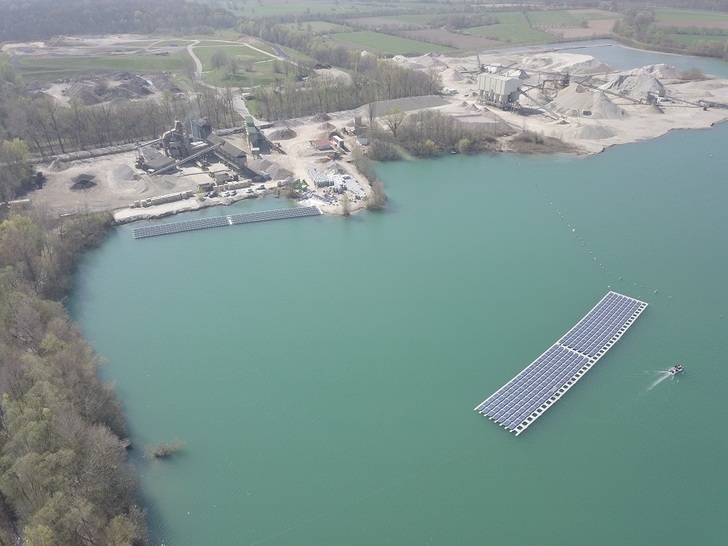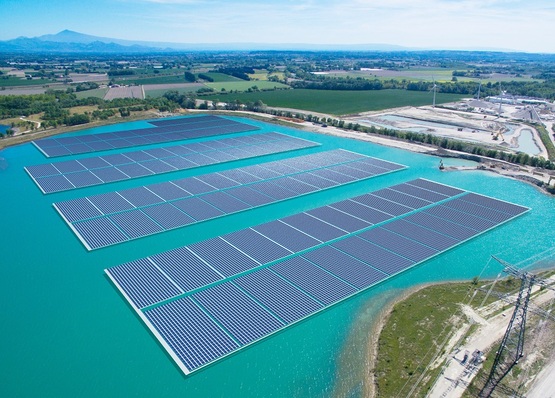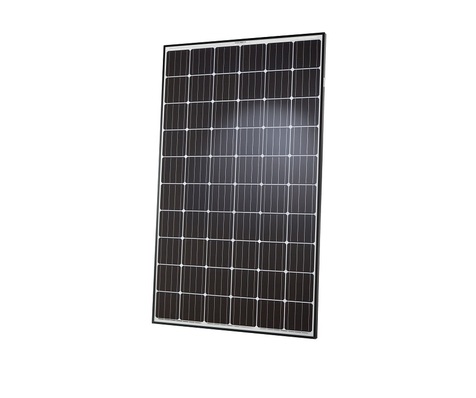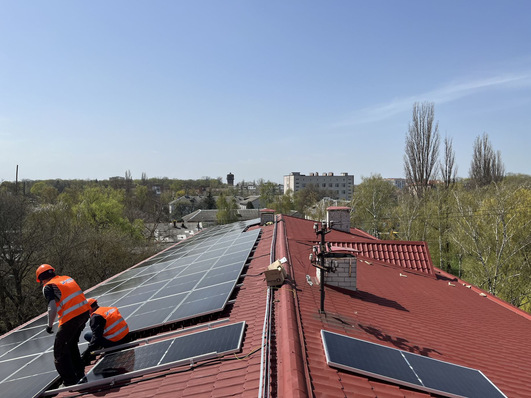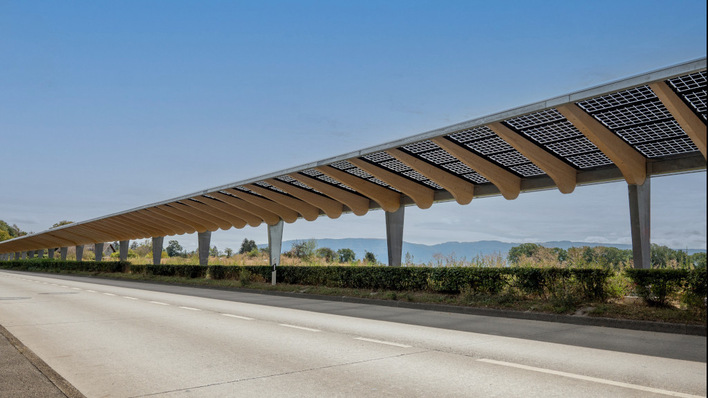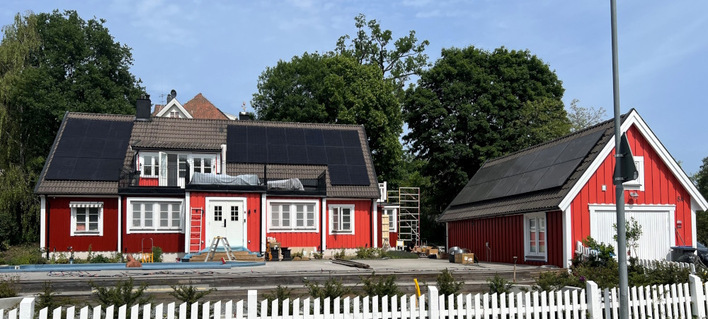Germany’s largest photovoltaic plant on an artificial lake is currently being built on a flooded gravel pit in the municipality of Renchen. (Baden-Württemberg). Only two percent of the lake area is covered by the modules yet the 750 kW plant delivers around 800,000 kilowatt hours of green electricity per year.
PV matches the load profile
Armin Ossola, the gravel works operator, can use around two thirds of this electricity because the load profile of its large electricity-operated equipment is a good match for the production times of the photovoltaic plant. The other third, produced at weekends for example, is fed into the public grid and distributed directly by project partner Erdgas Südwest.
“By using the green electricity I produce myself, I can significantly reduce my electricity costs and use the existing flooded gravel pit for more climate protection”, explains Armin Ossola. The changeover will save around 560,000 kilograms of harmful CO2 per year.
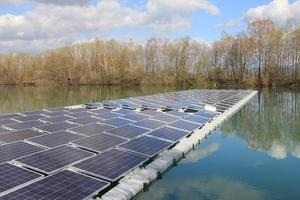
Requiring no additional land surface
Right from the outset, Ossola was also supported by the Industrieverband Steine und Erden Baden-Württemberg industry association. “The gravel works require a lot of energy. By producing these regeneratively while not requiring any additional land, the industry is making an important contribution to climate protection”, says Thomas Beißwenger, Managing Director. In contrast to open-air plants, those on an artificial lake do not compete with any other surface usage and the lakes would be there anyway.
150 gravel pits along the Rhine river
There are around 150 gravel pits along the Rhine river which are in operation. The demand for building materials such as sand and gravel has increased enormously in recent decades and continues to grow. Approximately 10 tons of material per inhabitant per year have to be excavated so that houses, office buildings, roads, railway lines and cycle paths can be built. In total, 100 million tons of mineral raw materials are extracted and required every year. This is pretty much the equivalent of one kilogram of mineral raw materials per inhabitant per hour. (HCN)
Stay informed, get our free newsletter twice a week. Register here
Join our pv Guided Tours at The smarter E Europe 2019 (Intersolar Europe, ees Europe, Power2Drive, EM-Power), register here

